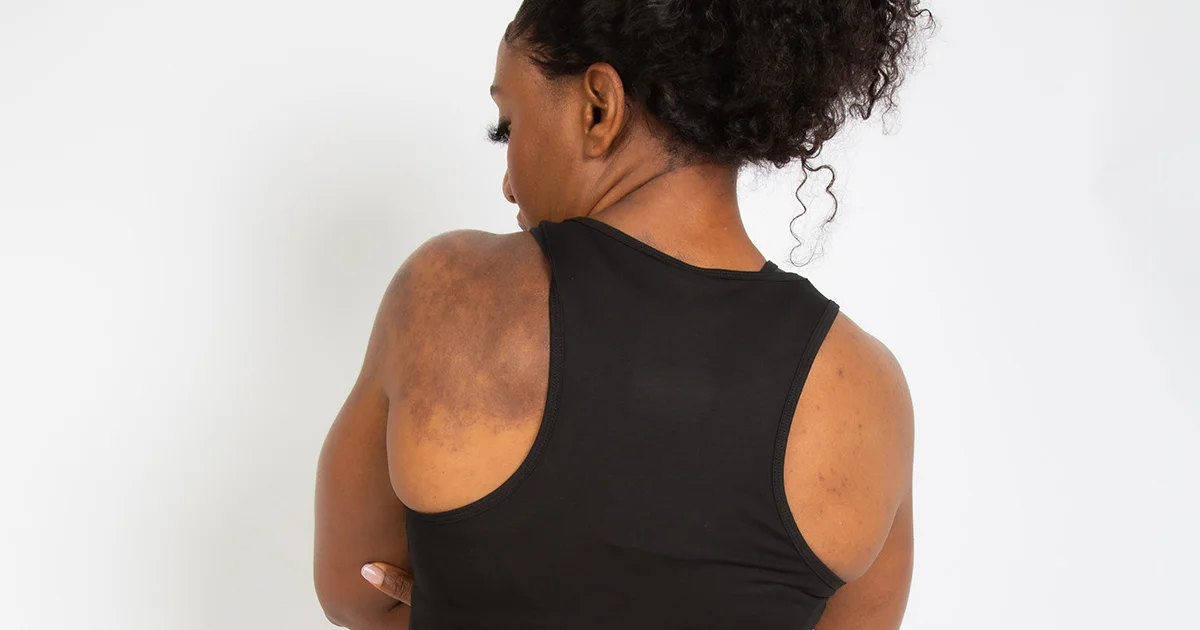Here's what we'll cover
Here's what we'll cover
There’s a lot of information out there that makes it complicated to gauge our wellness, risk of certain conditions, and any progress we’ve made to improve our health.
One trick to get a quick snapshot of your overall health is measuring waist circumference. You can do this any time, any day, from the comfort of your home with a cheap tool that you can order online. Here’s what you need to know about measuring your waist circumference and what it can tell you about your health.
How to measure waist circumference
All you need to figure out your waist circumference is a flexible tape measure. If you have one at home, you’re good to go, or you can order a sewing tape measure for a couple of dollars online.
To get your waist measurement:
Make sure you measure without a shirt on so the results are more accurate.
Wrap the tape measure around the smallest part of your waist, which is usually slightly above the belly button.
Check to ensure the tape measure is resting flat against your stomach and not pinching or forming a dent in your skin.
Take a normal breath in. Check the tape measure after you fully exhale.
To get the most accurate measurement possible, do it before eating in the morning and after going to the bathroom. Be mindful and make sure you’re not sucking in your stomach when you check the measuring tape, which could affect results.
What waist circumference means
It seems simple, but measuring your waist circumference can help assess your risk for certain health conditions. The only issue is it doesn’t provide specifics about our health.
For example, waist measurements can show us whether we hold fat on our stomachs, hips, and thighs but can’t tell us our exact body fat percentage.
Being able to identify where your body tends to store fat tissue can provide some information about our overall health.
Waist circumference vs. BMI
Waist circumference measurements can also give insight into cardiovascular and metabolic health risks that body mass index (BMI) does not (Ross, 2020).
Even though many healthcare providers and researchers more commonly use BMI, waist circumference can give a more accurate picture of your risk for high blood pressure, diabetes, and high cholesterol levels. One problem with BMI is a person can have a normal score but still be at risk for certain health problems.
For example, a person can be a regular bodyweight but have far more abdominal fat than hip or glute fat. This means someone could have a “normal” BMI but still be at risk for medical problems due to how they hold fat tissue, which would only be caught by measuring waist circumference (Khanna, 2021).
The opposite can also be true—because muscle weighs more than fat, a very muscular person may have a high BMI yet not be at risk for obesity or other health concerns. Waist circumference helps to account for these problems by showing where body fat is likely stored, an important metric because, as we’ll discuss below, storing fat in the abdomen puts one at risk for multiple health conditions.
Risk factors and health problems
A higher waist circumference can be a predictor of certain health risks like type 2 diabetes, hypertension, and plaque buildup in arteries (atherosclerosis). Waist circumference can also be used with hip measurements to calculate your waist-to-hip ratio (Lotta, 2018).
Abdominal fat is also associated with insulin resistance in people who don’t have type 2 diabetes. In men, subcutaneous fat (fat that sits under the skin that you can pinch) and visceral fat (this type—also called intra-abdominal fat—is located behind your belly and surrounds other organs) were associated with insulin resistance. In women, this health risk is more closely linked to visceral fat (de Mutsert, 2018).
Once you have your waist measurement, you can compare it to standardized charts like the example below.

Waist circumferences above these increased numbers are most closely associated with metabolic syndrome, a cluster of health conditions that ups the risk for chronic medical issues like heart disease.
A person is considered to have an increased metabolic risk if they have three of the following (Swarup, 2021):
Waist circumference above 40 inches for men or 35 inches for women
Higher triglyceride (a type of fat) levels
Lower “good” (HDL) cholesterol levels
Elevated fasting blood sugar (a blood test showing your glucose is high even when you haven’t eaten)
Increased blood pressure
This chart doesn’t apply to everyone, however. You shouldn’t compare numbers if you’re pregnant or have recently given birth. Researchers have also found that this chart may not be accurate for people of Asian descent, who may require lower measurements to determine risk (Ponnalagu, 2016).
How to decrease your waist circumference
Losing weight through a healthy diet and regular exercise can reduce your waist circumference. This, in turn, helps prevent health issues like hypertension (high blood pressure), cardiovascular disease, and type 2 diabetes.
You don’t need to worry too much about choosing the “right” diet either. Research has found the most effective eating habits create a modest calorie deficit. Low-carb and reduced-fat diets can be equally effective for weight loss.
Upping your protein intake (which is sometimes touted as a weight-loss hack) doesn’t necessarily speed weight loss in everyone, so don’t feel pressure to cut out fat, carbs, or force more protein into your diet (Gardner, 2018; Witjaksono, 2018). Eating a balanced diet of minimally processed, nutritious foods is the surest way of reaching a healthy weight.
If you’re losing weight but haven’t seen your waist measurement go down yet, don’t fret. It can be a slow process, and you can’t control where weight comes off your body first. Just remember that if you’re eating a healthy, diverse diet and are keeping physically active, you’re still reaping the health benefits, even if inches off your waist comes last.
It may be helpful to pair waist measurements with how much you weigh on a scale to judge your progress. If using a scale is triggering for you or leads to mental or emotional distress, you can take measurements of your hips, chest, arms, or thighs to track your progress instead.
It’s also important to remember that many different body shapes and sizes are healthy. There’s no one-size-fits-all when it comes to your health. What works for someone else may not be right for you, so try not to compare your progress to anyone else.
DISCLAIMER
If you have any medical questions or concerns, please talk to your healthcare provider. The articles on Health Guide are underpinned by peer-reviewed research and information drawn from medical societies and governmental agencies. However, they are not a substitute for professional medical advice, diagnosis, or treatment.
de Mutsert, R., Gast, K., Widya, R., et al. (2018). Associations of abdominal subcutaneous and visceral fat with insulin resistance and secretion differ between men and women: The Netherlands Epidemiology of Obesity Study. Metabolic Syndrome and Related Disorders , 16 (1), 54–63. doi:10.1089/met.2017.0128. Retrieved from https://www.liebertpub.com/doi/full/10.1089/met.2017.0128
Gardner, C. D., Trepanowski, J. F., Del Gobbo, L. C., et al. (2018). Effect of low-fat vs low-carbohydrate diet on 12-month weight loss in overweight adults and the association with genotype pattern or insulin secretion. JAMA , 319 (7), 667–679. doi:10.1001/jama.2018.0245. Retrieved from https://jamanetwork.com/journals/jama/fullarticle/2673150
Khanna, D. & Rehman, A. (2021). Pathophysiology of Obesity. StatPearls . Retrieved Mar. 31, 2022 from https://www.ncbi.nlm.nih.gov/books/NBK572076/
Lotta, L. A., Wittemans, L. B., Zuber, V., et al (2018). Association of genetic variants related to gluteofemoral vs abdominal fat distribution with type 2 diabetes, coronary disease, and cardiovascular risk factors. JAMA , 320 (24), 2553–2563. doi:10.1001/jama.2018.19329. Retrieved from https://jamanetwork.com/journals/jama/article-abstract/2719309
Ponnalagu, S. D. O., Bi, X., & Henry, C. J. (2019). Is waist circumference more strongly associated with metabolic risk factors than waist-to-height ratio in Asians? Nutrition, 60, 30–34. doi:10.1016/j.nut.2018.09.005. Retrieved from https://www.sciencedirect.com/science/article/abs/pii/S0899900718307354
Ross, R., Neeland, I. J., Yamashita, S., et al. (2020). Waist circumference as a vital sign in clinical practice: A consensus statement from the IAS and ICCR Working Group on visceral obesity. Nature Reviews Endocrinology , 16 (3), 177–189. doi:10.1038/s41574-019-0310-7. Retrieved from https://www.nature.com/articles/s41574-019-0310-7
Swarup, S., Goyal, A., Grigorova, Y., et al. (2021). Metabolic Syndrome. StatPearls . Retrieved Mar. 31, 2022 from https://www.ncbi.nlm.nih.gov/books/NBK459248/
Witjaksono, F., Jutamulia, J., Annisa, N. G., et al. (2018). Comparison of low calorie high protein and low calorie standard protein diet on waist circumference of adults with visceral obesity and weight cycling. BMC Research Notes , 11 (1). doi:10.1186/s13104-018-3781-z. Retrieved from https://bmcresnotes.biomedcentral.com/articles/10.1186/s13104-018-3781-z












